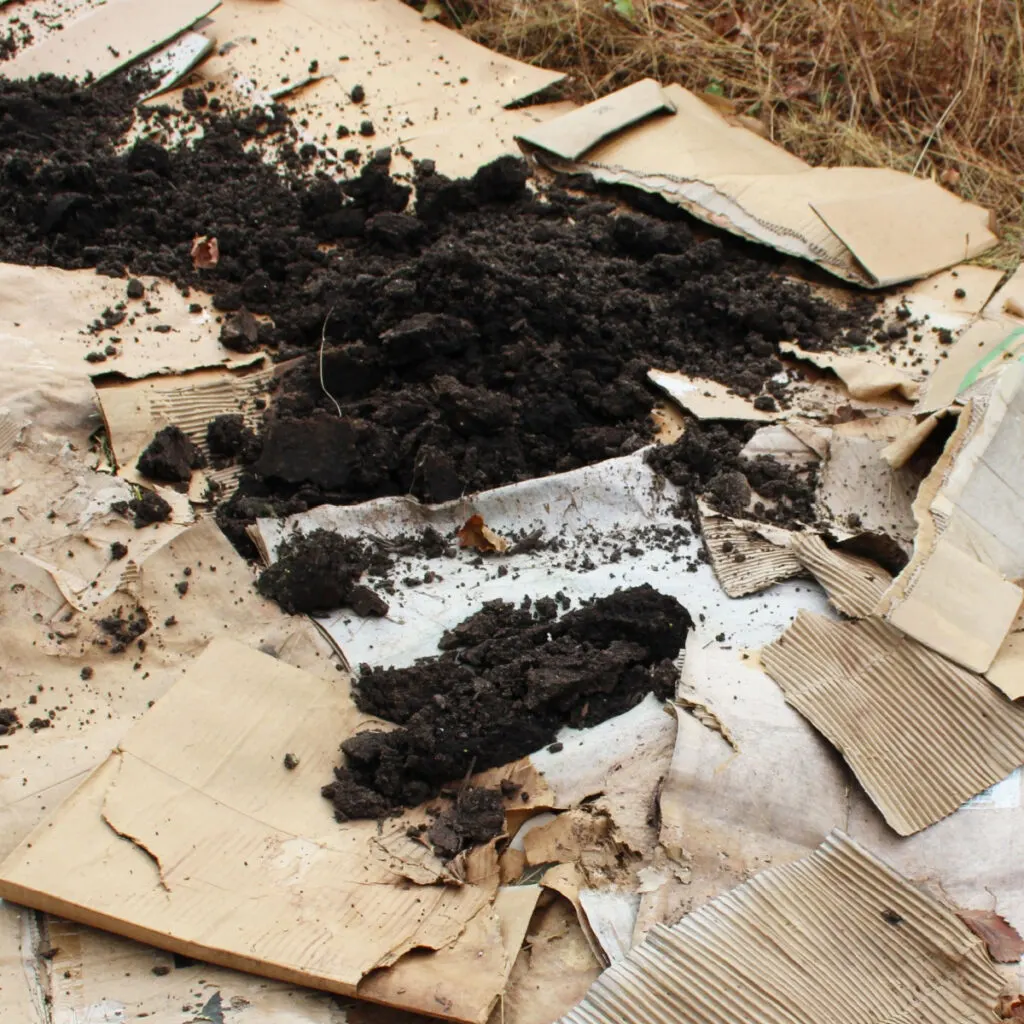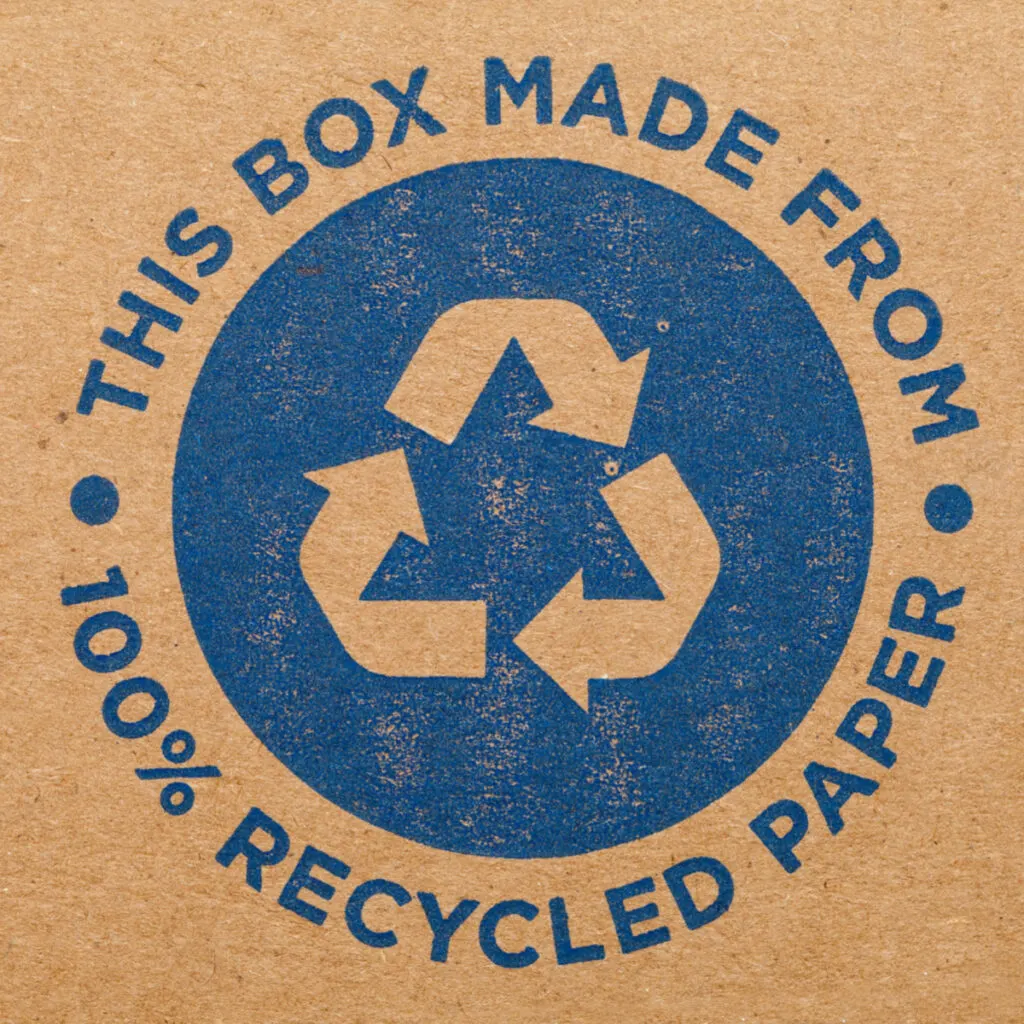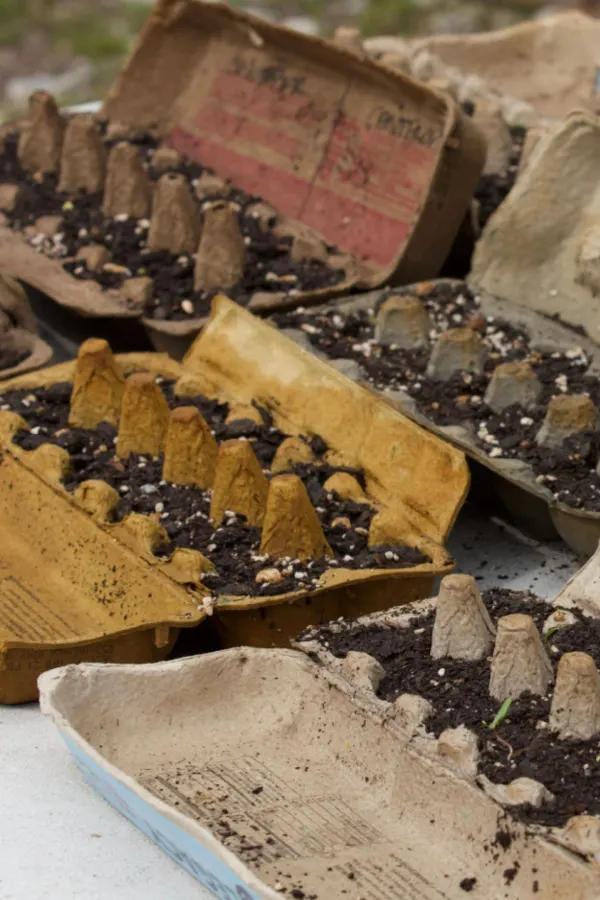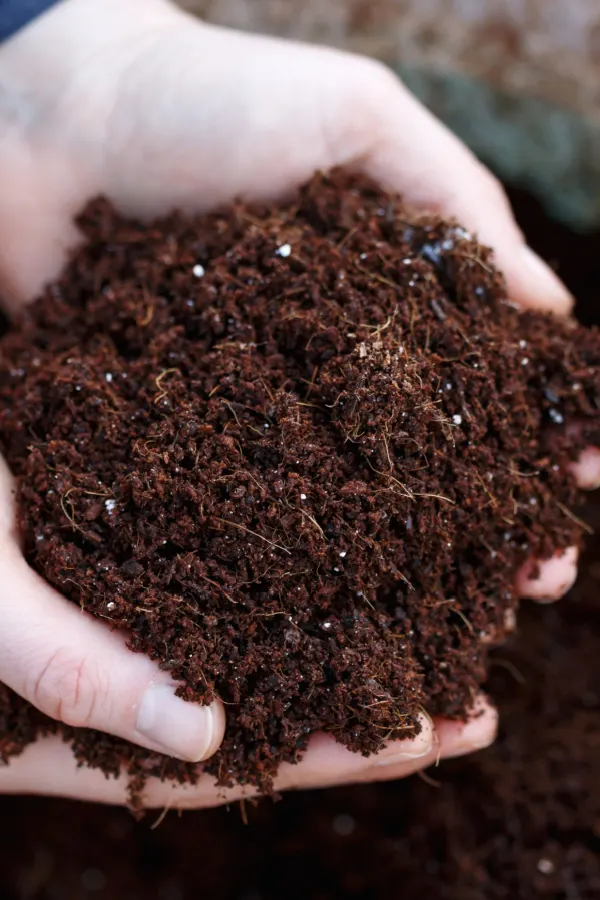If you are looking for a simple, easy and effective way to help stop weeds and the endless chore of weeding in your vegetable garden – it’s time to start using cardboard to your advantage. Not only is it a great way to repurpose and recycle this all too plentiful resource – it’s also usually free for the taking!
Cardboard can be an extremely effective weapon when it comes to both preventing and killing weeds. But it also has a few additional benefits that can help gardeners with more than just weeds.
As it turns out, cardboard is also wonderful for helping to improve the structure of soil. The natural fibers in cardboard decompose, adding valuable carbon, organic matter and nutrients into the soil as it breaks down.

Cardboard also happens to absorb and hold moisture. That can be a huge benefit for plants – and for the soil as well. After all, earthworms, microbes, and other beneficial organisms that help bring soil to life all need and require water to live and breathe.
Using The Right Type Of Cardboard
Obviously, just from the few paragraphs above, it’s easy to see all of the advantages that cardboard can bring to soil and plants.
However, before you run out and start putting down any cardboard you can find – it’s important to know that the type of cardboard you use matters. Especially when using it in a vegetable garden or around plants that produce edible food.
To be safe, it’s important to always use cardboard that contains no harmful glues or dyes. When present, these can leach into the soil as they break down. Not only can it be harmful to the plants, it can also be potentially harmful to those that later consume the fruit those plants produce.

The good news? There are many manufacturers of cardboard that now only use organic, natural dyes and glues. And with each passing year, that number continues to increase – which makes using it in your garden easier than ever.
The Best Cardboard To Use In The Garden
So how can you tell what cardboard is safe to use? It’s always best to avoid any cardboard with heavy inks or shiny coatings. These are not only slow to break down, they also often contain heavy amounts of glue. Instead, stick with cardboard that is uncoated, dull, and free of ink.
You can also look on the cardboard itself for answers. Many cardboard manufacturers now label their cardboard with an all-natural, dye-free, and/or 100% recyclable stamp. Some even go as far as identifying the cardboard contains only safe and biodegradable material and glues.
One great option for gardeners is to use uncoated cardboard egg cartons. These are safe and are also a great for using right up around plants – and all because of their design to hold eggs!

Egg cartons contain valleys and peaks inside. When placed upside down into the soil near plants, they not only help repel weeds and hold moisture in, but as the egg compartments break down, they also allow for loose soil and air channels around the roots of plants.
Even better, they are usually easy to source from friends and family to have plenty on hand whenever needed. Now that you know what cardboard you can use in the garden – let’s see how to use it!
How To Use Cardboard In A Garden To Stop Weeds
In a vegetable garden, there are several excellent ways to use cardboard to your advantage – whether it be in the walking rows between plants – or right up around your plants.
Using Cardboard In Walking Rows Between Plants
For gardeners, a lot of wasted time is spent every year trying to control the weeds in the areas between plants. Many gardeners choose to till these spaces on a regular basis. Others place a thick layer of mulch to help suppress weeds. Both options can be quite time consuming and costly.
But this is exactly where cardboard can save the day! Once you plant your garden, simply cover the walking rows with a few layers of cardboard. On top, place a light layer of straw or mulch. The walking rows are one area where multiple layers of cardboard can really end weeding for good.
The light layer of mulch on top will keep the garden looking tidy and provide a non-slippery surface for watering, harvesting and more – meanwhile, the cardboard layers underneath will have you saying good bye to weeding all summer long!

Using Cardboard Up Around Plants
We’ve already touched on using egg cartons around plants, but any type of cardboard is excellent for use. Not only will it keep competing weeds away from your plant’s roots, it also holds in moisture and allow for microbe and worm activity underneath – right near your plant’s roots.
Why is this so helpful? Because worms and other organisms create channels in the soil, allowing water, nutrients and air to get to roots. That same cardboard also helps insulate the soil from wild temperature swings.
To use, simply place a single thin layer around each plant. Leave the cardboard a few inches away from the stem, but allow it to cover 10 to 12 inches around it. A thin layer is best when using around plants. It will still be able to suppress weeds but not be so thick to prevent moisture from getting through.
Next, place a few inches of organic mulch on top. Straw, shredded leaves or grass clippings are all excellent choices for this. This will help to keep the cardboard in place and insulate your plant’s roots even more for better growth.
This same process is also perfect for using in flowerbeds around annual and perennial flowers as well. See: How To Use Cardboard To Stop Weeds In Flowerbeds
Cardboard In The Fall – Using Cardboard In A Garden To Stop Weeds
Perhaps the best part of all when using cardboard in the garden occurs at the end of the season in the fall. By the end of the growing season, the layers of cardboard will have completely broken down into the soil.

Because of that, loads of additional humus and structure have been added throughout the spring, summer and fall. And with the protective layer gone, you can now easily sow a cover crop to recharge and protect your soil all winter long. See: How & Why To Plant A Fall Cover Crop
Together, the cardboard and cover crop work to protect and recharge your soil the entire year around. Next spring, you can start the whole process again with another layering of cardboard – once again, saying good bye to weeds and weeding all season long.
Here is to saving and using cardboard in your garden – and to helping stop weeds and build better soil in the process!
Simple Garden Life
Follow Our Facebook Page For Even More Great Tips! Simple Garden Life Facebook Page
Simple Garden Life is a website dedicated to keeping gardening fun, simple and enjoyable! We publish two new articles each week along with a new garden podcast episode every two weeks. This article may contain affiliate links.
